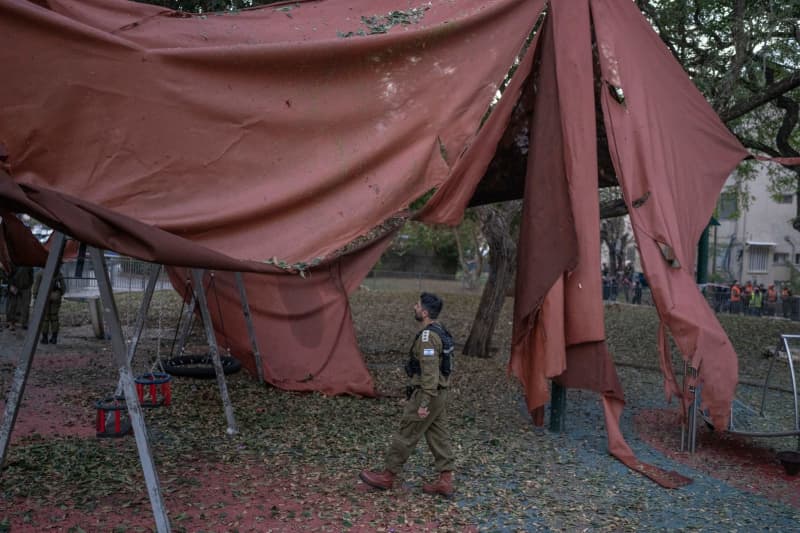Early Saturday, the Israeli military reported an unsuccessful attempt to intercept a projectile fired from Yemen, roughly 2,000 kilometers away, that ultimately landed in Tel Aviv. This incident resulted in several injuries; the Israeli rescue service, Magen David Adom, treated 16 individuals for minor wounds caused by shards of glass from broken windows. Air-raid sirens activated across central Israel, including in Tel Aviv, highlighting the heightened tensions as conflicts escalate in the region. The gravity of the situation intensified as the Houthi militia in Yemen claimed responsibility for the attack, declaring it a strike on a military target amidst ongoing regional conflicts.
The Houthi rebels, who are supported by Iran, have been vocal about their solidarity with Palestinian efforts in Gaza, particularly in light of the surging hostilities between Israel and Hamas following a catastrophic strike by the latter on October 7, 2023. This crossover of conflicts demonstrates how regional tensions often intertwine, with Houthi actions being framed as part of a broader resistance against Israel, making the situation even more complex. The daily threat of missile strikes serves as a grim reminder of the fragile status quo and the far-reaching implications of these political and military actions.
In retaliation for the projectile launch and ongoing Houthi aggressions, Israel conducted airstrikes targeting significant facilities, including key ports and the capital of Yemen, Sana’a. Such military operations indicate Israel’s commitment to securing its borders and address the threats posed by hostile groups in the region. The cyclical nature of retaliation suggests that military engagements will likely escalate, and momentum in the conflict could shift unpredictably, impacting civilians on both sides of the ongoing dispute.
As details emerged from the strike in Tel Aviv, emergency responders worked quickly to manage the aftermath. Residents evacuated homes near the impact site as emergency assistance provided medical treatment to those injured. Despite the relatively minor injuries reported, the psychological impact on the population cannot be understated. Israelis have repeatedly had to grapple with the near-constant threat of missile attacks, leading to anxiety and distress among the civilian population.
The involvement of multiple actors, including regional powers like Iran, adds layers of complexity to the conflict, as each side assesses military capabilities and ideological motivations. The Houthis see their actions as a form of support for Gaza’s Palestinians, hoping to challenge Israeli military might and project strength in the ongoing struggle for political recognition. Simultaneously, Israel continues to fortify its response capabilities while navigating international scrutiny concerning its military actions and the humanitarian consequences of prolonged warfare.
In conclusion, this latest incident underlines the precariousness of the situation in Israel and the surrounding regions. The difficulty in intercepting the projectile highlights gaps in Israel’s defense systems, while the retaliatory strikes on Yemen emphasize the cycle of violence that continues to dominate the narrative in the area. Both the psychological toll on civilians and the geopolitical ramifications of these military exchanges will likely define the ongoing conflict, with no immediate resolution in sight. The interconnectedness of these regional conflicts ensures that any escalation will reverberate beyond immediate borders, presenting profound challenges for peacekeeping and diplomatic solutions in the Middle East.

